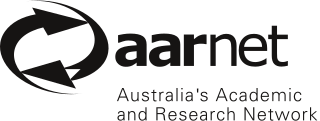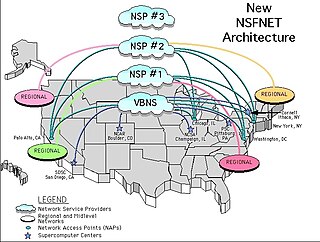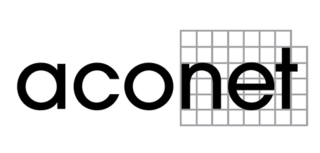
In telecommunications, packet switching is a method of grouping data into packets that are transmitted over a digital network. Packets are made of a header and a payload. Data in the header is used by networking hardware to direct the packet to its destination, where the payload is extracted and used by an operating system, application software, or higher layer protocols. Packet switching is the primary basis for data communications in computer networks worldwide.
The National Science Foundation Network (NSFNET) was a program of coordinated, evolving projects sponsored by the National Science Foundation (NSF) from 1985 to 1995 to promote advanced research and education networking in the United States. The program created several nationwide backbone computer networks in support of these initiatives. Initially created to link researchers to the NSF-funded supercomputing centers, through further public funding and private industry partnerships it developed into a major part of the Internet backbone.

The Cornell University Center for Advanced Computing (CAC), housed at Frank H. T. Rhodes Hall on the campus of Cornell University, is one of five original centers in the National Science Foundation's Supercomputer Centers Program. It was formerly called the Cornell Theory Center.
A leased line is a private telecommunications circuit between two or more locations provided according to a commercial contract. It is sometimes also known as a private circuit, and as a data line in the UK. Typically, leased lines are used by businesses to connect geographically distant offices.
CARNET is the national research and education network of Croatia. It is funded from the government budget and it operates from offices in Zagreb and five other cities.

AARNet provides Internet services to the Australian education and research communities and their research partners.
Optical Carrier transmission rates are a standardized set of specifications of transmission bandwidth for digital signals that can be carried on Synchronous Optical Networking (SONET) fiber optic networks. Transmission rates are defined by rate of the bitstream of the digital signal and are designated by hyphenation of the acronym OC and an integer value of the multiple of the basic unit of rate, e.g., OC-48. The base unit is 51.84 Mbit/s. Thus, the speed of optical-carrier-classified lines labeled as OC-n is n × 51.84 Mbit/s.
The China Education and Research Network is the first nationwide education and research computer network in China. The CERNET project is funded by the Chinese government and directly managed by the Chinese Ministry of Education. It is constructed and operated by Tsinghua University and the other leading Chinese universities.

A computer network is a set of computers sharing resources located on or provided by network nodes. Computers use common communication protocols over digital interconnections to communicate with each other. These interconnections are made up of telecommunication network technologies based on physically wired, optical, and wireless radio-frequency methods that may be arranged in a variety of network topologies.

The very high-speed Backbone Network Service (vBNS) came on line in April 1995 as part of a National Science Foundation (NSF) sponsored project to provide high-speed interconnection between NSF-sponsored supercomputing centers and select access points in the United States. The network was engineered and operated by MCI Telecommunications under a cooperative agreement with the NSF.

SURF is an organization that develops, implements and maintains the national research and education network (NREN) of the Netherlands. It operates the national research network formally called SURFnet.

CANARIE is the not-for-profit organisation which operates the national backbone network of Canada's national research and education network (NREN). The organisation receives the majority of its funding from the Government of Canada. It supports the development of research software tools; provides cloud resources for startups and small businesses; provides access and identity management services; and supports the development of policies, infrastructure and tools for research data management.

EMMAN was a company limited by guarantee and jointly owned by its members, eight Higher Education Institutions in the East Midlands region of the United Kingdom.
Delivery of Advanced Network Technology to Europe (DANTE) is a not-for-profit company that plans, builds and operates the consecutive generations of the backbone network that interconnects the national research and education networks (NRENs) in Europe. The organisation is based in Cambridge, United Kingdom and was formed in 1993 as a limited liability company owned by Réseaux Associés pour la Recherche Européenne (RARE). Ownership was transferred to a number of NRENs and government agencies in 1994.

The United Kingdom has been involved with the Internet throughout its origins and development. The telecommunications infrastructure in the United Kingdom provides Internet access to businesses and home users in various forms, including fibre, cable, DSL, wireless and mobile.

The use of the Internet in Iceland places Iceland among the top countries in the world in terms of Internet deployment and use. 99.68% of Icelanders used in the internet in 2021.

Merit Network, Inc., is a nonprofit member-governed organization providing high-performance computer networking and related services to educational, government, health care, and nonprofit organizations, primarily in Michigan. Created in 1966, Merit operates the longest running regional computer network in the United States.
The Ohio Academic Resources Network (OARnet) is a state-funded IT organization that provides member organizations with intrastate networking, virtualization and cloud computing solutions, advanced videoconferencing, connections to regional and international research networks and the commodity Internet, colocation services and emergency web-hosting.

ACOnet is the name of the national research and education network in Austria. The ACONET association promotes the development and use of that network. ACOnet is not managed and operated by ACONET, but by a unit in the Computing Centre of the University of Vienna that also operates the Vienna Internet Exchange. The University of Vienna represents ACOnet internationally, for example as a member of TERENA and as a participant in the project that funds the European backbone network GÉANT.
Missouri Research and Education Network (MOREnet) is a member-driven consortium, operating as a separate business unit within the University of Missouri in Columbia, Missouri. They are primarily made up of Missouri's K-12 schools, colleges and universities, public libraries and government organizations. In addition to maintaining a computer network for Internet access to school districts and libraries in the U.S. state of Missouri. they also provide technology consulting, a technology help desk as well as professional development and training, consortium discounts and a la carte services by a team of approximately 85 subject matter experts.











